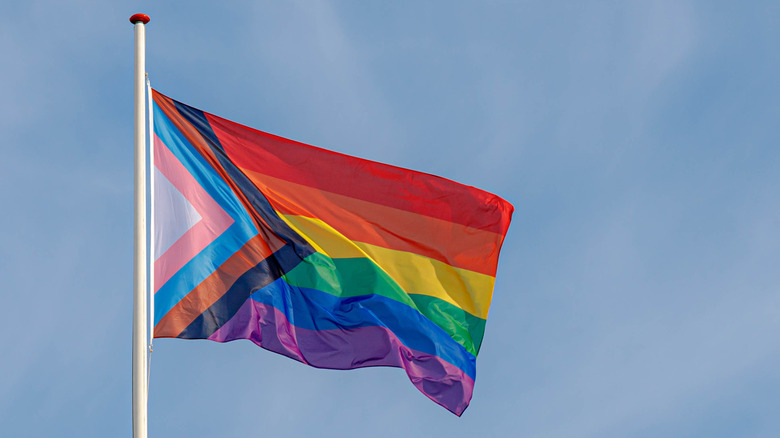The Disturbing Story Of The Cold War's 'Lavender Scare'
Sometimes, when faced with a world whose sanity has seemingly flipped upside down — the resurrection of far-right fascism, the flat-out refusal to accept the realities of climate change, the denial of the efficacy of vaccinations that protect humanity from lethal diseases — it helps to take stock of how far we've come in other areas, particularly gay rights. At the same time, such realizations serve to remind us about the fragility of progress, and how much constant protection it needs.
Case in point: The Red Scare. Most of us are familiar with McCarthyism, a modern-day witch-hunt within the U.S. federal government instigated by Republican Senator Joseph McCarthy in the early 1950s to root out "pinkos" and other such "communist sympathizers." The goal was clear: frighten the American public to justify exaggerated countermeasures through demonizing the "other," similar to the post 9-11 response that left Americans embroiled in a senseless swathe of 20-year-long carnage in the Middle East. A reliable boogieman throughout the 20th century was any non-capitalist nation, such as the U.S.S.R. and China. The Red Scare, in fact, predates McCarthyism, all the way back to the Palmer Raids in 1920, when, as the Constitution Center says, anywhere between 3,000 and 10,000 people in 35 cities were illegally detained because they might be "communists" or "anarchists."
Within the Red Scare, though, coiled the far less well-known persecution of LGBTQ+ people, the "Lavender Scare." It lasted decades, and reveals horrific, mind-blowing ignorance and legal policies shed only very recently.
Legalized, governmental persecution of gay people
"The pervert is easy prey to the blackmailer," the 2017 documentary "The Lavender Scare" quotes from the 1950s (trailer on YouTube). "The employment of homosexuals and other sex perverts in the government" created "security risks" because of the "weak moral character" of gay people that had a "corrosive influence" on fellow federal employees, Out History quotes. "Homosexuals must not be handling top-secret material," Senator McCarthy said (per CBS News), and the Senate agreed, concluding, "One homosexual can pollute a government office." And so, in 1953 President Eisenhower signed Executive Order 10450 permitting "the investigation, interrogation and systematic removal of gay men and lesbians from the federal government," per Time.
Such paranoia was a way for the American state to play post-World War II power games by policing morals under the guise of a security-driven rationale. Federal employees were pulled aside, as one victim recounts on Prism & Pen, and given polygraphs that went from asking, "Do you love your country?" to "Have you ever had sexual contact with another male, no matter how slight?" The nonexistent connection between homosexuality and security was even addressed by the Navy in its 1957 Crittenden Report, which found "no factual data" between the two, per The Atlantic. This report, though? Classified until 1976.
And the above polygraph test? It was actually administered in 1988. The Lavender Scare persisted all the way until 1995, when President Clinton overrode the security ban on gay federal employees, per The New York Times.
Bringing The Red Scare's cousin to light
Author David K. Johnson played a huge role in bringing The Lavender Scare into public light with his 2004 book, "The Lavender Scare: The Cold War Persecution of Gays and Lesbians in the Federal Government." Speaking of Eisenhower's motives in jumping on board the persecution, Johnson said on CBS News, "I think he probably didn't see this as a real threat, but he saw that it won elections." Filmmaker Josh Howard, responsible for the aforementioned documentary "The Lavender Scare," said that the government was piggybacking on common morals of the day, stating, "If you were found out to be gay in those years, your life was essentially over. You were shunned by society. You were shunned in the workplace. It's the reason people were in the closet in the 1950s." Even in their own homes people remained afraid that a neighbor, a friend, an associate, what-have-you, would tip someone off. In the end, The Lavender Scare rode this wave. Thousands lost their jobs, faced societal ostracization and being unemployable, and some were even driven to suicide, as Out History says.
It's the hope of people like David Johnson and Josh Howard that folks become aware and educated about The Red Scare's lesser-known, but more long-lasting cousin, as well as early gay rights activists like Frank Kameny. To that end, both "The Lavender Scare" film website and PBS have resources available for teachers to use in the classroom.


